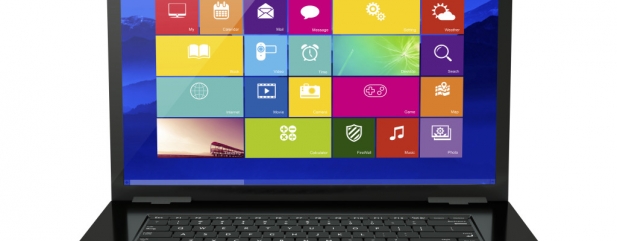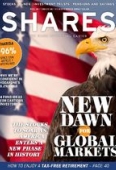Archived article
Please note that tax, investment, pension and ISA rules can change and the information and any views contained in this article may now be inaccurate.
Dial down the risk

Those investors rattled by Donald Trump’s US election victory might well be looking to defensive-oriented income strategies. Investec Diversified Income (GB0031074924) helps dials down risk and offers defensive protection as well as an attractive distribution yield
of 5%.
Managed by Investec Asset Management stalwart John Stopford, the £230m open-ended investment company (OEIC) aims to provide an income with opportunities for capital growth over the long term through investing around the world across a large range of government and corporate bonds, shares and related derivatives. As at end-September, there were 250 bond holdings and 49 equity holdings in the portfolio.
Overarching beliefs
Stopford, head of multi asset income at Investec, explains: ‘We think multi-asset strategies are uniquely well positioned to deliver performance outcomes because they have the flexibility and the breadth that comes from a very wide opportunity set. It means you can adapt to changing circumstances and aim to achieve a set of objectives.
You are not tied to a particular area or asset class and stuck if it is out of favour.’
The manager has certain overarching beliefs underpinning his approach to multi-asset investing. ‘We think it is important to have a common framework to assess securities, to be able to look at different asset types in essentially the same way,’ he explains. ‘We developed something called Compelling Forces back in the early 1990s. This was a summary of the key drivers which we thought separated a good investment from a bad investment.’
Investing check list
For every investment, Stopford and his deeply-resourced team assess valuation, the fundamental drivers of each asset and whether they are supportive of not (economic environment, micro fundamentals, etc). They also examine market price behaviour, recognising the reason that markets don’t trade at fair value all of the time is because people and emotions are involved.
‘So for every single investment we look at, whether an equity, a bond, a commodity, a currency, a property company, we will assess it on those criteria. A good investment will be positively rated on those things and a bad investment will be negatively rated,’ says Stopford.
‘If we are building a portfolio with lots of different things, it is useful to be able to say this looks like a better idea than that, even if they are in completely different asset classes. It is about trying to identify where the high conviction positions should be.’
Defensive total return
‘Our first overriding objective is to deliver a defensive total return,’ stresses Stopford. ‘We’re not trying to deliver income at the expense of capital, we don’t want to just focus on chasing yield, we’re trying to deliver a balanced outcome.’
Nonetheless he tells Shares most of the fund’s total return will come from income – ‘we target a level of yield which we believe is both attractive and sustainable’ – and the target since launch has been 4-6%.
‘The final objective is to do all of that with bond-like volatility. We will always run a level of risk that is less than half the volatility of the equity market. That whole combination is a defensive income strategy.’
Bond focus
‘We are not massive bond bears, but we do think valuations are stretched – but only a little bit because we live in a world of low growth, low inflation and easy monetary policy, so a material move higher in yields needs those things to change and they’ll only change slowly,’ says Stopford.
He adds: ‘We manage risks partly by selecting government bonds in markets on the right side of the interest rate cycle and which are still reasonably valued. Two examples would be Canadian bonds and New Zealand bonds, where we think we are going to get rate cuts this year as both central banks are unhappy with the inflation dynamics.’
Quality bias
‘The equities we own on the whole tend to be less risky than the market,’ says Stopford, an investor in dependable names ranging from packaged goods giant Procter & Gamble (PG:NYSE) to health care products colossus Johnson & Johnson (JNJ:NYSE) and tobacco firm Imperial Brands (IMB).
By building the fund from the bottom up, the Investec man argues ‘we can have the best of all worlds – our portfolio has a higher yield than the market, a lower price to earnings ratio than the market, a comfortably higher return on equity, comfortably less leverage and so on. On a whole range of metrics, we think it is a better quality, higher yielding, less risky basket.’
Cautious on utilities and telcos and having avoided banks until now, Stopford says ‘banks tend to benefit from some normalisation of rates and the main area we’ve identified is in Scandinavia where there are some very highly capitalised banks. We own Swedbank (FRYA:XETRA), which has a well defined position in the mortgage market.’
Investors are also buying exposure to Microsoft (MSFT:NDQ), which like a lot of older technology companies is shifting away from the one-off sale to annuity-type services. ‘Cisco (CSCO:NDQ) is another example – the company is transforming from an old-style hardware business to more of a services business,’ adds Stopford. ‘Qualcomm (QCOM:NDQ) is company where we think their licensing business is a very attractive area. They all have reasonable yields but more importantly, yields which are very sustainable and all three are reasonably valued.’
John Stopford, Investec Asset Management
Important information:
These articles are provided by Shares magazine which is published by AJ Bell Media, a part of AJ Bell. Shares is not written by AJ Bell.
Shares is provided for your general information and use and is not a personal recommendation to invest. It is not intended to be relied upon by you in making or not making any investment decisions. The investments referred to in these articles will not be suitable for all investors. If in doubt please seek appropriate independent financial advice.
Investors acting on the information in these articles do so at their own risk and AJ Bell Media and its staff do not accept liability for losses suffered by investors as a result of their investment decisions.

 magazine
magazine











